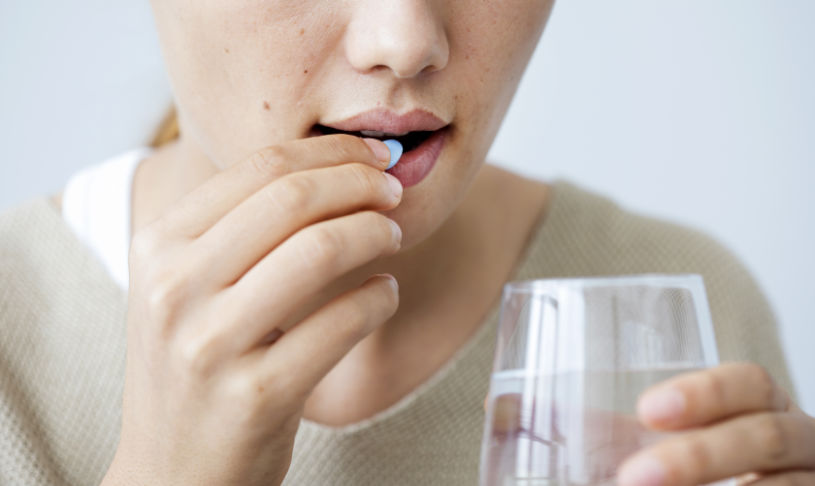Phenobarbital is a nonselective antidepressant substance that is used as a first-line treatment for convulsive seizures in children and adults. Phenobarbital or Phenobarb is barbiturate which decreases brain activity to induce sedation. Using the medicine over a long period of time weakens its effectiveness.
Table Of Contents:
This may encourage users to increase the dosage to ensure the drug’s efficiency. This can result in Phenobarb abuse and addiction. Due to its sedative-hypnotic nature, weaning off the medicine can result in some significant signs and symptoms. For this reason, the medication should not be stopped abruptly but should be withdrawn by tapering off the drug over days or weeks.
Patients should seek help from medical professionals or addiction centers where they will be taken through a series of treatment programs and aftercare to help them wean off the medication. In this article, readers would discover more information on symptoms associated with weaning off Phenobarb and suitable detox protocols.
Causes Of Phenobarbital Withdrawal
Though Phenobarb is efficient at controlling seizures, lowering anxiety, and inducing sleep, it can cause dependence. It, therefore, becomes necessary to wean off the medication or it may have serious health consequences on the users.
These Are the Reasons That Should Constitute Enough Grounds for Users to Withdraw From the Medication:
- Abuse– Phenobarbital can be habit-forming due to its activity on the brain. This can cause users to easily develop dependence and abuse the drug. If this is not quickly checked it can have some negative effects on the health of the addicts. Research indicates that about 6.4 million people in the US abused sedatives and tranquilizers including Phenobarbital. The abuse of the medication can lead to addiction.
- Addiction– Another case for Phenobarbital withdrawal is addiction. It is easy to develop Phenobarbital tolerance when it is used for a long time. This weakens the effect of the medicine. So, for it to work efficiently the dose will need to be increased. People who develop tolerance will need to take larger doses of the medication. Taking the drug in larger doses may cause overdose and is known to cause addiction.

Phenobarbital Withdrawal Signs And Symptoms
Symptoms are very much similar to those associated with stopping alcohol intake and are noticeable after several hours of discontinuation. Phenobarb belongs to a class of drugs called barbiturates. These are in a drug class known as sedative-hypnotics and their work is to lower anxiety and induce sleep. These drugs can be habit-forming and can cause dependence. Thus, it is easy to get hooked on drugs and it can be problematic when trying to withdraw from them. Hence, patients are most likely to experience severe symptoms depending on their previous usage.
These Withdrawal Symptoms Include:
- Malaise And Weakness
- Headache
- Hypoxia
- Irritability
- Tremors
- Nausea And Vomiting
- Abdominal Cramps
- Distortion In Visual Perception
- Muscle Twitching
- Tachycardia
- Anxiety
- Depression
- Insomnia
Since the MOA of Phenobarb is to help minimize activeness, tension, and anxiety in the brain, patients are also likely to experience other phenobarb withdrawal symptoms like orthostatic hypotension and convulsions which may develop after a day or two. Hallucinations and delirium tremens may also occur before the symptoms disappear.
Phenobarbital Withdrawal Timeline
Phenobarbital withdrawal timeline of symptoms is quite similar to the withdrawal symptoms of withdrawing from alcohol and is likely to occur within 8-12 hrs after the last dose. Though there is a fair idea of how long it will take for Phenobarbital withdrawal symptoms to dissipate, there is no exact timeline. Due to certain factors, it can take weeks or months for the Phenobarbital withdrawal symptoms to disappear. However, just like weaning off alcohol, the Phenobarb withdrawal should be done with the help of a health professional to avoid negative effects such as relapse and overdose.
- Day 1: Within a day of withdrawing, patients would start to experience minor symptoms such as anxiety, dizziness, body weakness, vomiting, and insomnia. These signs continue for as long as 5-7 days.
- Week 1: At this stage, significant symptoms start to kick in. These withdrawal symptoms include convulsions, delirium, seizures, tactile, auditory, and visual hallucinations, and high blood pressure.
- Week 2: By the second week of withdrawing, most of the symptoms should have dissipated and become easier to manage, although specific symptoms might linger for a couple of weeks.
To determine if Solfoton has been safely eradicated from the system, a Phenobarb blood test can be carried out. Scientists use a Phenobarb blood test to measure the amount or concentration of Solfoton in the blood. The clearance (CL) of Solfoton is linearly related to body weight and matures with increasing age with a maturation half-life of 22.1 days.
Stopping the medicine can be very difficult because the withdrawal symptoms can be so severe that those who abuse the drug easily end up relapsing.
Factors That Can Affect Phenobarb Withdrawal
As earlier mentioned, though there is a typical timeline for Phenobarb withdrawal, several factors will determine how long before one can safely be tapered off the drug. Also, other drugs are used during the withdrawal phase to ease the whole process.
The Factors That Will Determine the Severity of Symptoms and How Long It Will Take for Them to Disappear Are as Follows:
- The dose (how much of the drug) the patient has been abusing
- How long the medicine has been abused
- How the patient was taking the medicine
- How many drugs they were administering along with the medicine
- History of previous addictions
- Any mental issues or occurring disorder
- Current medical information of the patient
- The patient’s age
- Whether the patient was tapered off or not
All these factors will be of great use when determining how early or late a user can be weaned off the medication. However, care must be taken during the withdrawal phase since any mistake or carelessness could prove fatal. Patients are encouraged to seek help from addiction centers that may combine treatment with therapy and care. This is to tackle issues that led to the phenobarb abuse or addiction is to ensure the patient does not relapse after treatment.

Stopping Phenobarb Safely
The advantages of quitting the drug should serve as an impetus. Abusers and addicts should not stop taking the medication abruptly as that could lead to dangerous side effects. Rather, the withdrawal process should be supervised by a medical professional. Also, addiction treatment centers use programs designed to help patients wean off the drug. Some of the treatment programs include in-patient, out-patient, group, and individual counseling. Once the treatment comes to an end and the patients have stopped taking the drug, they should not be left on their own. They need the care and support of family and caregivers to help them stay off the drug.
Phenobarb Detox Process
People of all ages can become addicted to Phenobarbital. Once this happens, a gradual phenobarbital detox protocol is required to avoid relapse. The Phenobarb detox process is a procedure in which a person is freed from excess Solfoton intake in the body. The whole aim of the process is to remove wastes or toxins from the bloodstream, help ease the Phenobarbital withdrawal symptoms, and prepare the patients for long-term recovery.
During the detoxification process, a thorough assessment of the addict would be conducted. The individual will also answer a variety of questions about their history of Solfoton use. Depending on the patient’s specific situation, the ideal method of detox will be devised.
Treatment Options Focus On:
- Behavioral issues
- Mental health and addiction
- Counseling services
- Homework assignment
- 12 steps meetings
- Psycho-education classes
- Individual therapy
- Group therapy cognitive behavior therapy
- Dialectical behavior therapy
- Psycho-education and support group
If an active detox program is not in place to resist dependence, patients are exposed to some significant phenobarbital adverse effects on the bone, blood, connective tissue, and liver. Detoxification is essential when one is serious about recovering from Solfoton addiction. There are numerous detox facilities around, and it can be quite hard to choose the right one that meets all demands. At this point, it is crucial for all patients to choose the best detox facility, with special treatment programs that would make the whole process stress-free and painless. Also, make sure the detox facility has a good track record of providing quality services.
Hope Without Commitment
Find the best treatment options. Call our free and confidential helpline
Most private insurances accepted
Page Sources
- MedlinePlus. (n.d). Phenobarbital. MedlinePlus. https://medlineplus.gov/druginfo/meds/a682007.html
- Substance Abuse and Mental Health Services Administration. (2019). Key Substance Use and Mental Health Indicators in the United States: Results from The 2018 National Survey on Drug Use and Health. Substance Abuse and Mental Health Services Administration.https://www.samhsa.gov/data/sites/default/files/cbhsq-reports/NSDUHNationalFindingsReport2018/NSDUHNationalFindingsReport2018.pdf
- Recovery. (n.d). Is Phenobarbital Addictive? Can you get addicted to Phenobarbital?. Recovery. https://www.recovery.org/phenobarbital/
- J. Bidlack, H. Morris III. (2008). Phenobarbital Withdrawal Seizures May Occur Over Several Weeks Before Remitting: Human Data and Hypothetical Mechanism. National Library of Medicine: National Institutes of Health. https://www.ncbi.nlm.nih.gov/pmc/articles/PMC2632796/




